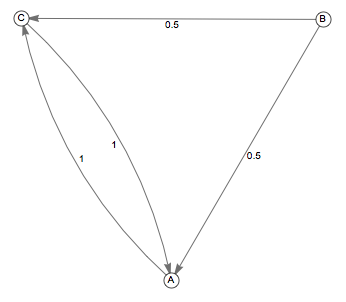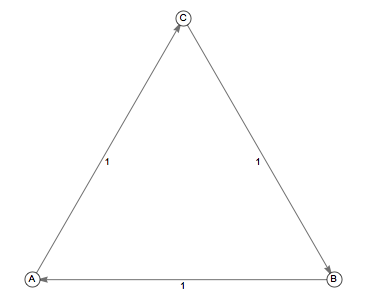Markov Chain Vocab
The graphs of two time-homogeneous Markov chains are shown below.
 Chain 1
Chain 1
 Chain 2
Chain 2
Determine facts about their periodicity and reducibility.
This section requires Javascript.
You are seeing this because something didn't load right. We suggest you, (a) try
refreshing the page, (b) enabling javascript if it is disabled on your browser and,
finally, (c)
loading the
non-javascript version of this page
. We're sorry about the hassle.
Relevant wiki: Markov Chains
In Markov Chain 1, there is no way to get from state A (or C) to state B. Any move from state A (or C) to itself must take an even number of steps, so that state is periodic. Thus, Chain 1 is not irreducible and not aperiodic.
In Markov Chain 2, there is a way to get from any given state to any other. Any move from state A (or B, or C) to itself must take a number of steps divisible by 3, so that state is periodic. Thus, Chain 1 is irreducible and not aperiodic.